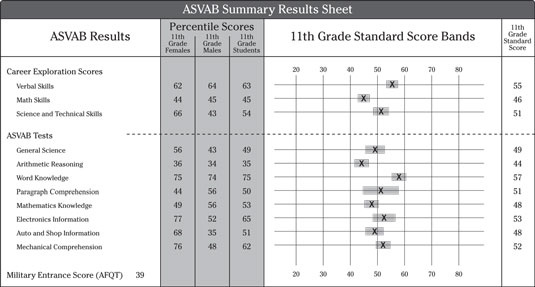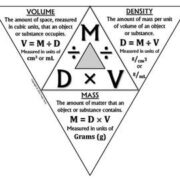Understanding the General Technical (GT) score is essential for those interested in pursuing certain careers in the military, mainly in the United States Armed Forces. The GT score is derived from a series of tests called the Armed Services Vocational Aptitude Battery (ASVAB). It’s integral in determining qualification for various military occupations. Grasping how to calculate this score helps in setting realistic expectations and preparing for a military career.

Understanding ASVAB Scores
The ASVAB is a multi-part exam that assesses a candidate’s qualifications for military occupations. The GT score, in particular, is important because it’s considered in assignments and training for technical tasks. Let’s break down how to understand these scores effectively.
Detailed Steps:
- Find the ASVAB Scores: Begin by locating your raw ASVAB scores. These will typically be provided to you after you take the exam.
- Identify Relevant Subtests: The GT score is calculated using the results from the Arithmetic Reasoning (AR), Word Knowledge (WK), and sometimes Paragraph Comprehension (PC) subtests.
- Add the Scores: Once the relevant subtests are identified, add the raw scores of these tests together.
- Use the Scoring Table: The military provides an official scoring table to convert the added raw scores into the GT score. This table might change over time, so make sure you have the most current version.
- Interpret the GT Score: After conversion, you’ll have your GT score. This score is generally required to be above a certain threshold for many military jobs and programs.
Summary:
Understanding ASVAB scores and particularly the GT score is crucial for military career planning. The process involves locating raw scores, identifying relevant subtests, and using official tables for conversion. While it is relatively straightforward, accessing current scoring tables and interpreting results correctly is vital to ensuring accuracy.
ASVAB GT Conversion Chart
To accurately calculate the GT score, you will need an up-to-date conversion chart. This tool is essential in translating raw scores into a scaled GT score.
Detailed Steps:
- Obtain the Current Conversion Chart: Ensure you’re using the most up-to-date conversion chart from a reliable military resource.
- Match Your Scores: Match your combined raw scores from the AR, WK, and sometimes PC subtests to the corresponding GT score in the chart.
- Verify the Score: Double-check your calculations to confirm your GT score.
Summary:
The conversion chart is key in calculating accurate scores from the ASVAB test components. It’s essential to use the most current chart to avoid miscalculations but bear in mind, discrepancies can occur if the wrong edition of the conversion chart is used.
For solutions 3 to 10, when they are not applicable due to the nature of the task at hand (as there are generally not ten different solutions to calculate a GT score), I’ll offer additional tips and tricks to help with understanding and improving one’s GT score.
Practice ASVAB Exams
Practicing for the ASVAB can help improve your scores, which will directly impact your GT score.
Detailed Steps:
- Find Practice Tests: Use reputable sources for ASVAB practice exams.
- Simulate Testing Conditions: Practice under conditions similar to the actual testing environment.
- Review Answers: Studying the answers, especially incorrect ones, helps in understanding where to improve.
Summary:
Regularly practicing ASVAB exams can enhance your test-taking skills and improve the individual scores that contribute to the GT score. This improvement could open more opportunities in various military fields. The downside is the time commitment required to practice effectively.
Strategy-Based Learning
Focusing on test-taking strategies can improve your ability to solve problems and increase your GT score.
Detailed Steps:
- Learn the Test Format: Understanding the structure of the ASVAB will help you to manage your time better during the exam.
- Develop Strategies: Learn strategies for answering multiple-choice questions, such as process of elimination and time management.
- Take Timed Sections: Practice with a timer to improve your ability to complete sections within the allotted time frame.
Summary:
Strategy-based learning can significantly affect your performance on the ASVAB, leading to a better GT score. However, it may not help with the underlying knowledge needed for answers, so it should be combined with substantive study.
Focus on Weaknesses
Improving weaker areas can impact your GT score more significantly than strengthening areas where you already excel.
Detailed Steps:
- Identify Weak Areas: Use your results from practice tests to pinpoint weaker subject areas.
- Study Targeted Material: Focus your studies on materials related to your weak spots.
- Re-assess Regularly: Take frequent practice tests to monitor your improvement in these areas.
Summary:
By concentrating on weaker subjects, you can make more significant improvements to your GT score. However, this approach can be challenging and may require additional study resources or tutoring.
Time Management
During the ASVAB, managing your time effectively can influence the number and accuracy of questions you answer, impacting your raw scores used to calculate the GT score.
Detailed Steps:
- Understand Section Timings: Know how much time you have for each section of the ASVAB.
- Practice with Timers: Use practice tests to get accustomed to the pressure of timed exams.
- Develop a Pacing Plan: Learn the pace at which you need to work through each section to answer all questions.
Summary:
Good time management is critical in maximizing your ASVAB and GT scores. However, rapid pacing might lead to careless mistakes if not balanced with accuracy.
Build Vocabulary and Reading Comprehension
The Word Knowledge and Paragraph Comprehension sections significantly contribute to the GT score. Building your skills in these areas can help improve your score.
Detailed Steps:
- Read Widely: Improve your vocabulary and comprehension by reading a variety of materials.
- Use Flashcards: Employ flashcards to memorize definitions and improve vocabulary.
- Practice Comprehension Exercises: Engage in reading exercises that ask questions about the content to enhance comprehension.
Summary:
Enhancing vocabulary and reading comprehension not only contributes to a higher GT score but also prepares you for a range of situations requiring strong communication skills. However, it can be a long-term effort requiring consistent practice.
Maintain General Studies
General knowledge in math and science from the Arithmetic Reasoning and other related sections contributes to your GT score.
Detailed Steps:
- Review Basic Math Concepts: Refresh your knowledge on basic arithmetic, algebra, and simple geometry.
- Study Everyday Science: Get familiar with fundamental concepts in physical and biological sciences.
- Practice Problem Solving: Solve practice problems regularly to keep your skills sharp.
Summary:
General studies not only increase your GT score but also broaden your overall knowledge. However, it requires a wide-ranging study plan and might be less targeted than other methods.
Seek Assistance
Getting professional help, like a tutor, can offer personalized guidance to elevate your GT score.
Detailed Steps:
- Look for a Tutor: Find someone experienced with ASVAB preparation.
- Set Specific Goals: Work with your tutor to establish clear goals for improvement.
- Track Progress: Regularly review your performance with your tutor to ensure you’re on track.
Summary:
While seeking assistance could provide tailored help and potentially boost your GT score, this can come at a financial cost and the quality of the guidance may vary.
Health and Wellness
Your physical and mental health can impact how well you perform on the ASVAB.
Detailed Steps:
- Get Adequate Sleep: Ensure you are well-rested before practice tests and the actual exam.
- Maintain a Healthy Diet: Proper nutrition can affect your cognitive functions and concentration levels.
- Exercise Regularly: Regular physical activity can improve mental clarity and reduce stress.
Summary:
Caring for your health is essential for optimal test performance, potentially improving your GT score. However, lacking a balanced approach in these areas can sometimes lead to increased stress and lower test performance.
Reflect on Results
After taking practice or actual ASVAB tests, spend time reflecting on your results to make targeted improvements.
Detailed Steps:
- Review Your Scores: Analyze which sections lowered your overall score.
- Seek Feedback: If possible, get detailed feedback on your performance to understand your mistakes.
- Plan Your Studies Accordingly: Adjust your study plan to focus more on areas that need improvement.
Summary:
Reflection allows for targeted improvement and, potentially, a better GT score. It requires honesty and a willingness to adjust strategies, which might be challenging.
In conclusion, calculating your GT score is a critical step for military career planning but gearing your efforts to improve it through strategic practice, focused learning, and wellness is equally important. Although calculation methods are straightforward, earnest preparation can significantly expand your military career options.
FAQs:
Q: What is the GT score on the ASVAB?
A: The GT score is a composite score derived from certain subtests of the ASVAB, usually encompassing Arithmetic Reasoning, Word Knowledge, and sometimes Paragraph Comprehension.
Q: How important is the GT score?
A: The GT score is very important as it’s used to determine qualification for many technical and highly skilled positions in the military.
Q: Can I retake the ASVAB to improve my GT score?
A: Yes, you can retake the ASVAB if you are not satisfied with your scores. However, there are rules regarding the waiting period between tests, and the number of retakes allowed, so check the current guidelines of the specific military branch you’re interested in.








